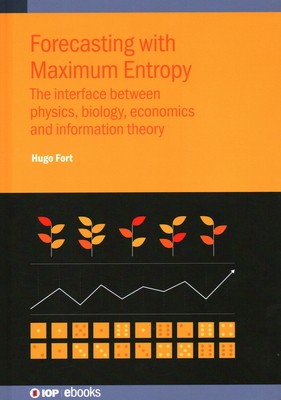
- We will send in 10–14 business days.
- Author: Hugo Fort
- Publisher: IOP Publishing Ltd
- ISBN-10: 0750339292
- ISBN-13: 9780750339292
- Format: 17.8 x 25.4 x 1.4 cm, kieti viršeliai
- Language: English
- SAVE -10% with code: EXTRA
Reviews
Description
This book aims at providing a unifying framework, based on Information Entropy and its maximization, to connect the phenomenology of evolutionary biology, community ecology, financial economics, and statistical physics. This more comprehensive view, besides providing further insight into problems, enables problem-solving strategies by applying proven methods in one discipline to formally similar problems in other areas. The book also proposes a forecasting method for important practical problems in these disciplines and is directed to researchers, students and practitioners working on modelling the dynamics of complex systems.
The common thread is how the flux of information both controls and serves to predict the dynamics of complex systems. It is shown how maximizing the Shannon information entropy allows one to infer a central object controlling the dynamics of complex systems, such as ecosystems or markets. The resulting models, which are known as pairwise maximum-entropy models, can be used to infer interactions from data in a wide variety of systems. Here, two examples are analysed in detail. The first is an application to conservation ecology, namely the issue of providing early warning indicators of population crashes of species of trees in tropical forests. The second is about forecasting the market values of firms through evolutionary economics. An interesting lesson is that PME modelling often produces accurate predictions despite not incorporating explicit interaction mechanisms.
Key features
- Written to be suitable for a broad spectrum of readers and assumes little mathematical specialism.
- Includes pedagogical features: Worked examples, case studies and summaries.
- The interdisciplinary approach builds bridges between disciplines.
- Oriented to solve practical problems.
- Includes a combination of analytical derivations and numerical simulations with experiments
EXTRA 10 % discount with code: EXTRA
The promotion ends in 23d.06:44:04
The discount code is valid when purchasing from 10 €. Discounts do not stack.
- Author: Hugo Fort
- Publisher: IOP Publishing Ltd
- ISBN-10: 0750339292
- ISBN-13: 9780750339292
- Format: 17.8 x 25.4 x 1.4 cm, kieti viršeliai
- Language: English English
This book aims at providing a unifying framework, based on Information Entropy and its maximization, to connect the phenomenology of evolutionary biology, community ecology, financial economics, and statistical physics. This more comprehensive view, besides providing further insight into problems, enables problem-solving strategies by applying proven methods in one discipline to formally similar problems in other areas. The book also proposes a forecasting method for important practical problems in these disciplines and is directed to researchers, students and practitioners working on modelling the dynamics of complex systems.
The common thread is how the flux of information both controls and serves to predict the dynamics of complex systems. It is shown how maximizing the Shannon information entropy allows one to infer a central object controlling the dynamics of complex systems, such as ecosystems or markets. The resulting models, which are known as pairwise maximum-entropy models, can be used to infer interactions from data in a wide variety of systems. Here, two examples are analysed in detail. The first is an application to conservation ecology, namely the issue of providing early warning indicators of population crashes of species of trees in tropical forests. The second is about forecasting the market values of firms through evolutionary economics. An interesting lesson is that PME modelling often produces accurate predictions despite not incorporating explicit interaction mechanisms.
Key features
- Written to be suitable for a broad spectrum of readers and assumes little mathematical specialism.
- Includes pedagogical features: Worked examples, case studies and summaries.
- The interdisciplinary approach builds bridges between disciplines.
- Oriented to solve practical problems.
- Includes a combination of analytical derivations and numerical simulations with experiments


Reviews